International Mysteries of Cycling History
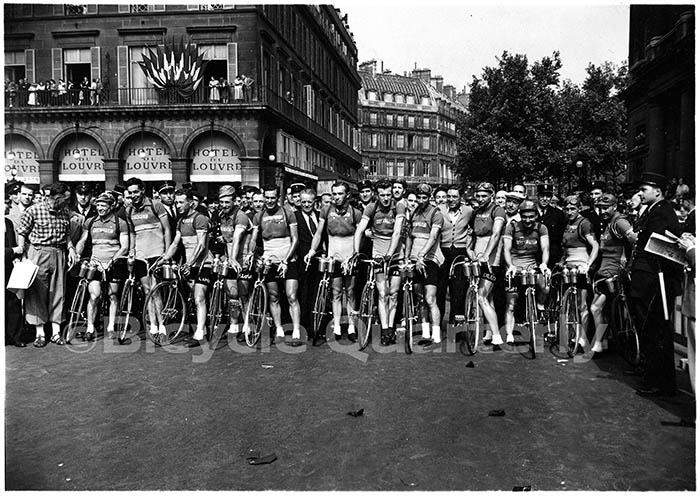
The history of cycling has brought us many useful things. If old randonneurs hadn’t talked so fondly about the supple, wide, handmade clinchers of the 1940s, we might never have developed our Compass tires along the same lines. Without photos of mid-century riders scaling unpaved passes in the Alps, we might never have been inspired to seek out remote gravel roads ourselves. These are important reasons why we study cycling’s history.
But sometimes, cycling history just provides wonderful mysteries. In the current Bicycle Quarterly, Aldo Ross examines why, during the 1949 Tour de France, dozens of riders converted their bikes to bar-end shifters – like Louis Caput (right rider) in the photo below. Neither Aldo nor I can think of another component that suddenly was adopted by so many riders, not before or after, but during a big race.
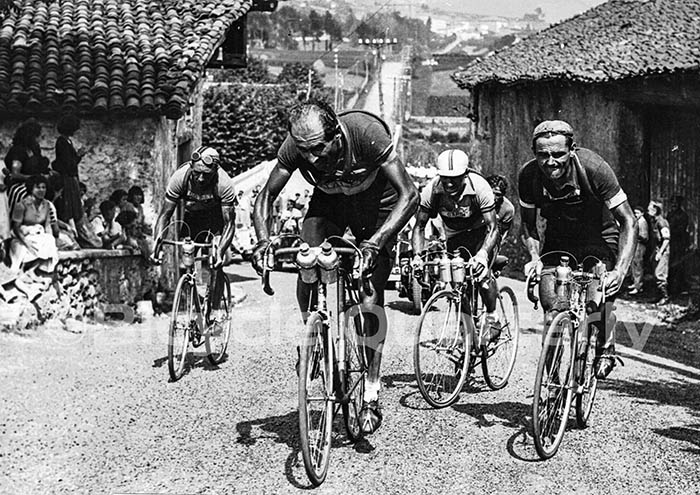
The mystery deepened when we discovered that these riders used a downtube shifter for their rear derailleur and controlled only the front with the bar-end. Say what?
Aldo documented this amazing story with photos from his incredible collection of sepia-tone cycling magazines. I dug into Bicycle Quarterly‘s archives and found that Daniel Rebour – who else? – provided the explanation: Front derailleurs used to be controlled by a direct lever. At the start of a sprint, racers had to spread their legs and reach down to shift to the big ring. A bar-end shifter allowed them to shift without interrupting their pedal stroke. Why not a second downtube shifter? Racers always used their right hand to shift, and they probably didn’t want to learn a new move in mid-race. So they put both shifters on the right side of the bike – one on the down tube and the other on the handlebars.
The BQ archives also showed that Tullio Campagnolo adopted the bar-ends when he introduced his first derailleurs the following year. Campagnolo didn’t even offer downtube levers at first. And Jacques Souhart, the inventor of the bar-ends, turns up again as Campagnolo’s Paris distributor. Talk about an international mystery!
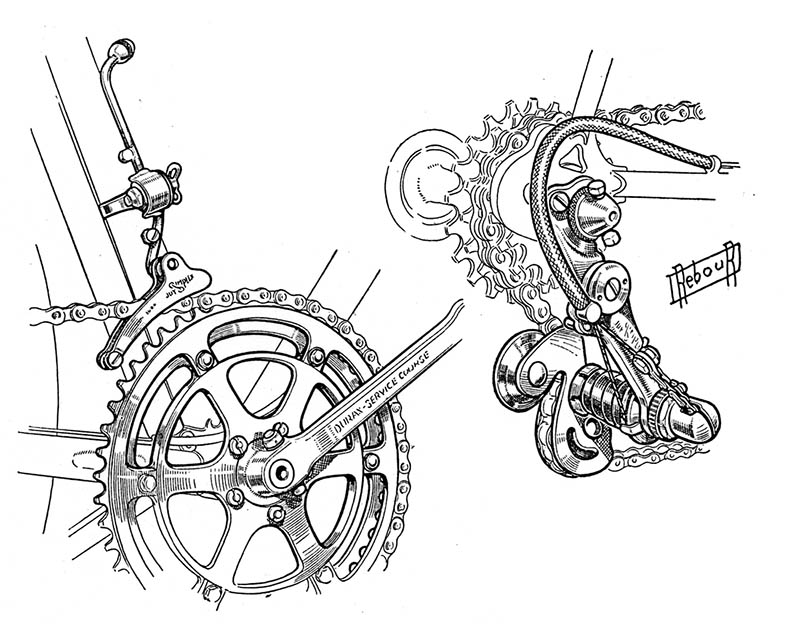
In the same BQ, we look at the history of shifting. Many readers will be surprised that the first derailleurs were indexed. And why did racers use chainrings that were just 4 teeth apart? This article illuminates quite a few mysteries in the history of derailleurs.
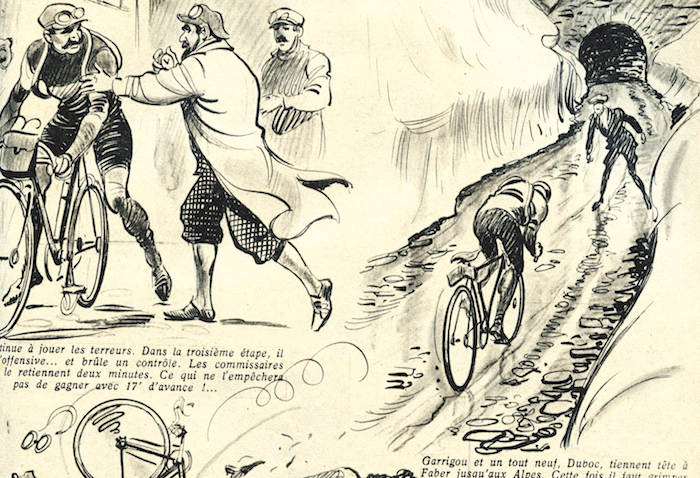
To set the scene for these mysteries, we relive the early Tours de France through the evocative drawings of Pellos, a cartoon artists who accompanied the Tour for decades. Pellos’ pen turned the race into a human drama of Homeric proportions. You don’t need to be a fan of racing to be drawn into these stories.
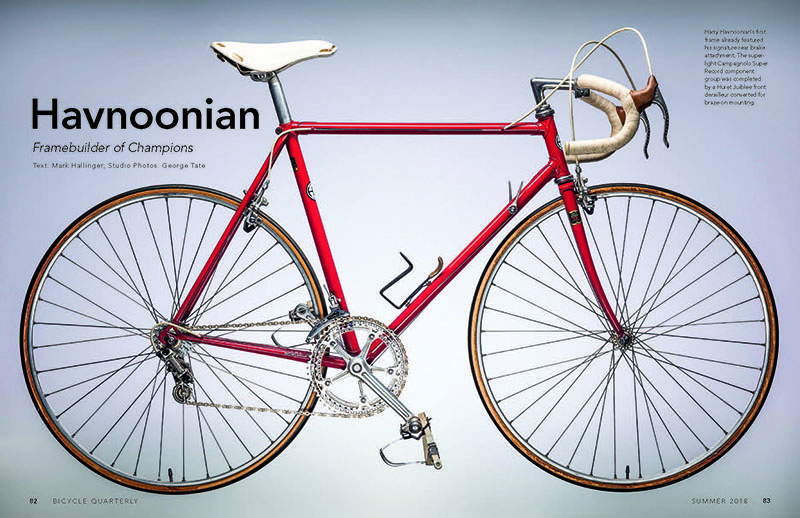
Expanding on the racing theme, we feature Harry Havnoonian, the builder of racing bikes from Pennsylvania, whose iconic machines have been ridden to more than 100 national and international championships. We discover why HH mounts the rear brake on the inside of the stays and other mysteries.
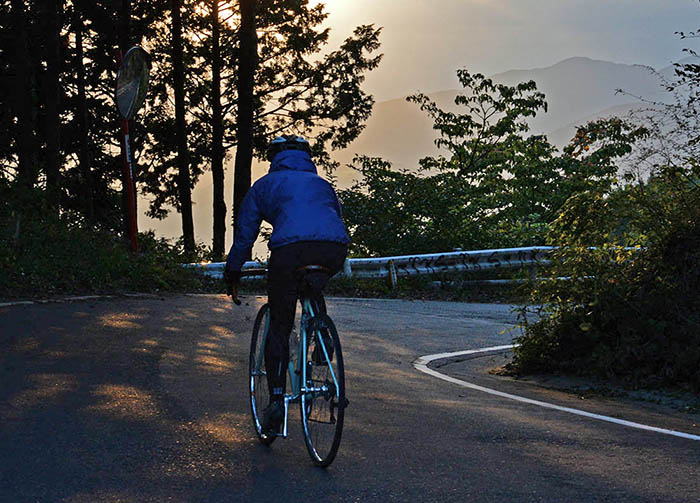
To round off our racing theme, our editor Natsuko Hirose talks about her Di2-equipped, custom-built, steel-framed racing bike. She reflects in how it makes her ride differently than when she is on her cyclotouring bikes.
This year’s racing season is almost over, but there is still time to get the Summer Bicycle Quarterly with these exciting articles – click here to subscribe today, and your subscription will start with the Summer edition!*
*U.S. subscribers only. The last international mailing of the Summer BQ has already left Seattle. Please order the BQ 64 as a back issue instead.


